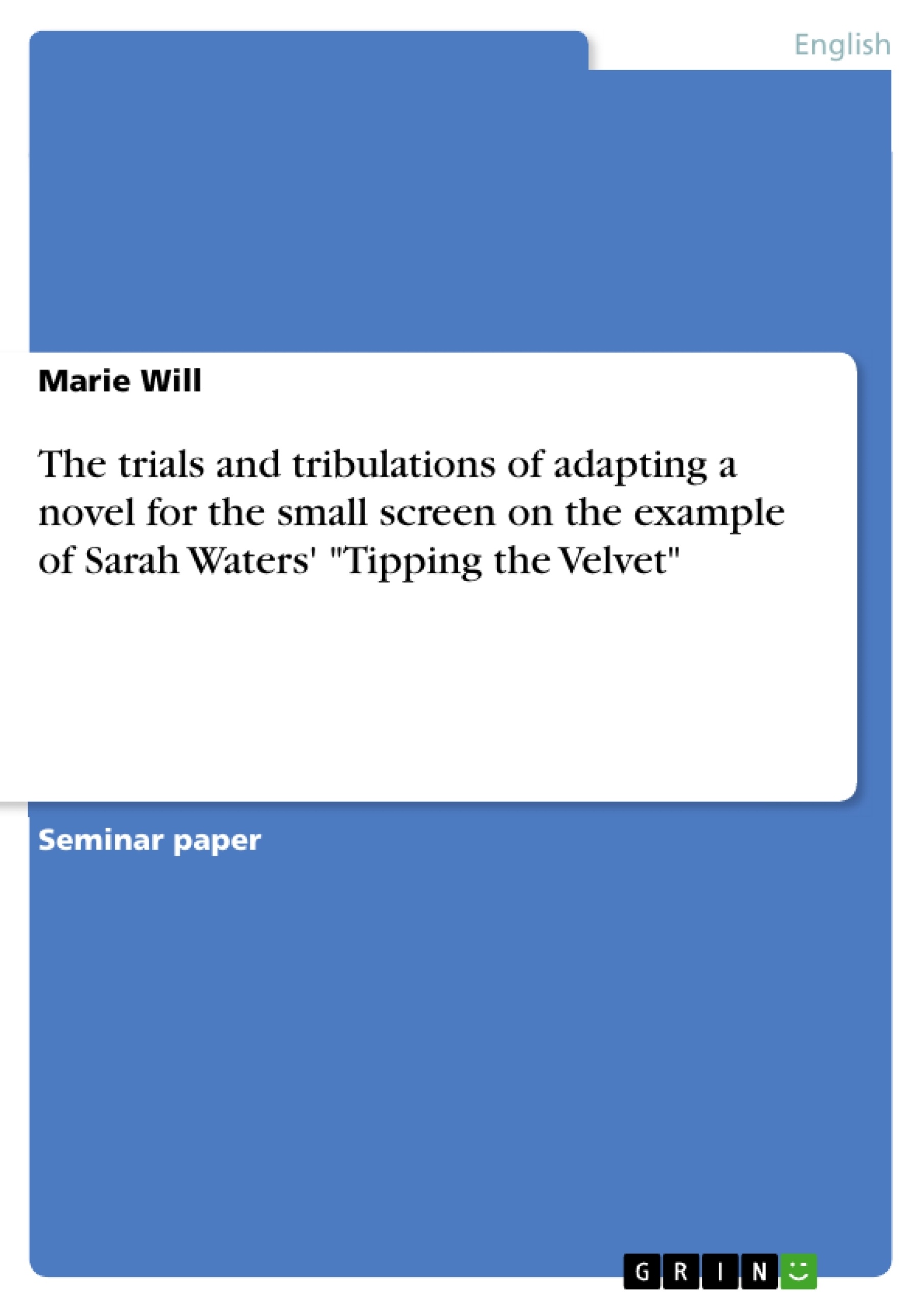In order to make their product appealing to as many viewers as possible, filmmakers often change elements in the source material they are adapting. With "Tipping the Velvet", two particular scenes from the novel were modified so that a larger audience could be reached. In this paper, I aim to show what changes were made in the TV adaptation of Waters’ novel and how these changes affected the target audience.
When asked to imagine the Victorian era, most people immediately think about upper-class, uptight ladies and gents in uncomfortable clothing, who’s general repressiveness forbade them to talk about anything personal, much less romantic or even sexual. In fact, when looking up “prude” in the Thesaurus, the first word that is listed under synonyms is “Victorian” (cf. “Prude”). Sarah Waters’ novel "Tipping the Velvet" about a young woman from the countryside who falls in love with a male impersonator, moves to London with her and goes on to search for her sexual and gender identity does not seem to fit this picture. However, when looking more closely, the Victorian era was not as prudish as we like to think. At only 32, Waters, with her first publication, “revolutionised gay literature” by creating a narrative that “imagine[d] a Victorian lesbian history through the sexual adventures of cross-dressing” (Allfree). This was something entirely new for the wide readership. Although a fair share of fictional as well as non-fictional work on Victorian sexualities had been published during the 20th century, and there even existed contemporary Victorian writing on this topic – as Waters points out in the afterword of the 20th anniversary edition (cf. Waters 474) – none of these works had gained such a wide recognition by literary critics as well as the public.Following its huge success, Waters’ novel was quickly adapted for the small screen. The 2002 BBC adaptation of Tipping the Velvet mostly follows the plot as it was constructed by Waters with only small differences. A simple – yet not entirely wrong – answer to the question of why the TV series was watched by so many people would be accessibility. But is that really the only reason why the TV program reached so many more people compared to the already widely read and highly acclaimed novel?
Table of Contents
- I Introduction
- II An Excursion into Adaptation Studies
- III Broad vs. Narrow Audience: How the Target Audience Influences Changes in the Source Material
- IV Taking a Closer Look: An Analysis of two Crucial Moments in the Novel and the Series
- IV.I The Double Act
- IV.II The Rally
- V Summary
Objectives and Key Themes
This paper aims to analyze the changes made in the television adaptation of Sarah Waters' novel Tipping the Velvet and to explore how these changes influenced the target audience. By examining specific scenes from both the novel and the television series, the paper seeks to demonstrate the impact of adaptation on audience engagement.
- The challenges and opportunities of adapting a novel for television.
- The influence of target audience on adaptation decisions.
- The differences between novel and television as mediums for storytelling.
- The role of adaptation studies in understanding the creative process of adaptation.
- The impact of adaptation on the reception and understanding of a work.
Chapter Summaries
The introduction establishes the context for the paper by discussing Sarah Waters' Tipping the Velvet and its historical setting. It highlights the challenges of portraying Victorian sexuality and the complexities of gender identity in the novel. The chapter also examines the reception of the novel and its subsequent television adaptation.
Chapter two introduces the concept of adaptation studies and explores the key theoretical frameworks that inform this field. It examines the differences between novel and television as mediums, highlighting the need for creative interpretation and adaptation in translating a novel to the screen.
Chapter three explores the concept of target audience and its influence on adaptation decisions. It considers how the author's initial intentions for a narrow audience (lesbians) differed from the broader reception of the novel. This chapter also examines the screenwriter's decision to make changes to the narrative in order to broaden the appeal of the television adaptation.
Keywords
This paper focuses on the key concepts of adaptation studies, target audience, and the intersection of literary and cinematic analysis. It explores the themes of Victorian sexuality, gender identity, and the challenges of translating a literary work to the screen. It also highlights the importance of considering the specific contexts and audiences for both the original work and its adaptation.
- Quote paper
- Marie Will (Author), 2019, The trials and tribulations of adapting a novel for the small screen on the example of Sarah Waters' "Tipping the Velvet", Munich, GRIN Verlag, https://www.grin.com/document/1369017



